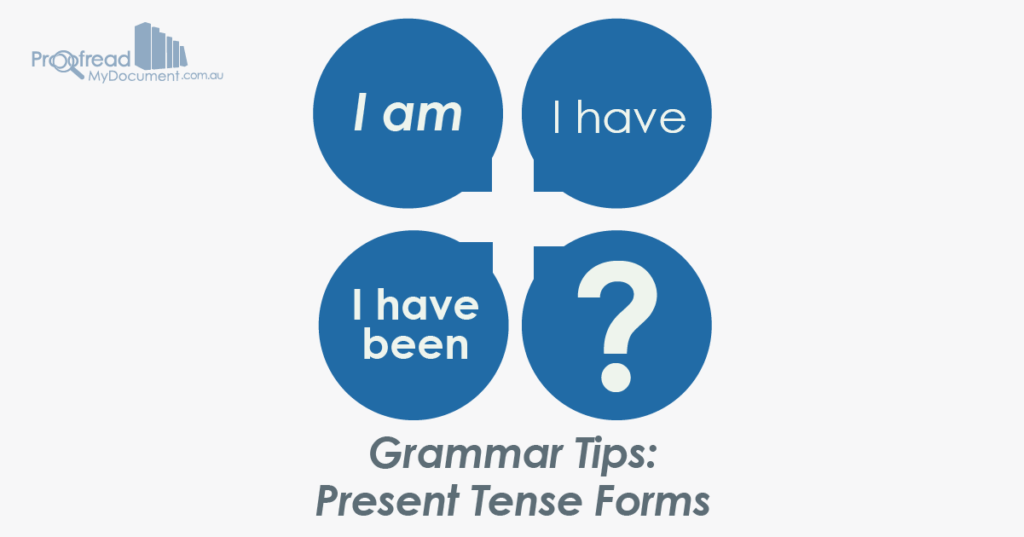The past is an illusion. The future will never arrive. All we have is the present…
Actually, that’s a lie. We don’t care about the metaphysics of time. We’re more interested in grammar, so in this post we’re looking at four forms of the present tense. Learn how to use them correctly, and it should be easy to avoid errors in your written work.
Simple Present
The most basic form of the present tense is the simple present. It can be used to describe:
- Current facts (e.g. I am very tired.)
- General truths (e.g. Most people sleep at night.)
- Things that happen regularly (e.g. Bob takes a nap every afternoon.)
Keep in mind that the verb form used depends on the grammatical person in the sentence:
- First person (singular) = I love my bed.
- First person (plural) = We love our bed.
- Second person (singular/plural) = You love your bed.
- Third person (singular) = He loves his bed.
- Third person (plural) = They love their bed.
As shown here, the base verb form is used in most cases, but an extra ‘s’ is added in the third person when the subject is singular.
Present Progressive
The present progressive is used to describe ongoing actions. This form combines a ‘be’ verb with a present participle (i.e. an ‘-ing’ verb):
- First person (singular) = I am
- First person (plural) = We are
- Second person (singular/plural) = You are
- Third person (singular) = She is
- Third person (plural) = They are
In this case, the present participle remains the same in all cases, but the helper verb depends on the grammatical person and whether the subject is singular or plural.
Present Perfect
The present perfect tense can be used when:
- Something began in the past but continues to apply in the present
- Something was completed at an indefinite point in the past
For this tense, a helping verb (i.e. ‘have’ or ‘has’) is combined with a past participle:
Find this useful?
Subscribe to our newsletter and get writing tips from our editors straight to your inbox.
- First person (singular/plural) = I have slept in many places.
- Second person (singular/plural) = You have slept for a long time.
- Third person (singular) = He has snored throughout the entire film.
- Third person (plural) = They have napped every day for a month.
Most past participles have ‘-ed’ endings, like ‘snored’ and ‘napped’ above. However, irregular verbs are different (e.g. sleep → slept). Keep an eye out for these when using the present perfect.
Present Perfect Progressive
Finally, we use the present perfect progressive tense (also known as the present perfect continuous) when an action that began in the past is still happening:
I have been working for eleven hours now.
We can also use it when an action has ended recently and has consequences in the present:
I have been sleeping, so I’m still a little groggy.
In both cases, the key thing is that the present perfect progressive tense combines ‘been’ with either ‘has’ or ‘have’ (depending on grammatical person and whether the sentence subject is singular or plural) and a present participle.
Knowing when to use each version of the present tense can be tricky, but if you follow the guidelines above you should be on the right track.
